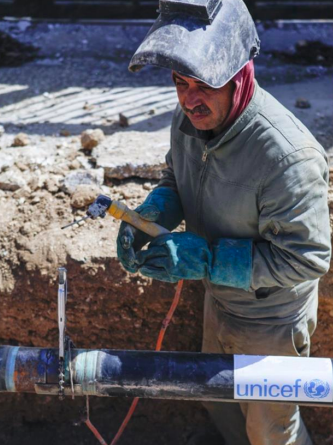1. Initial National Communication Report to the UNFCCC. State of Palestine Environment Quality Authority; 2016
2. The State of Palestine’s First Nationally Determined Contributions (NDCs) “Updated Submission” October 2021. State of Palestine; 2021
3. National Adaptation Plan (NAP) to Climate Change. State of Palestine Environment Quality Authority; 2016
4. Quality criteria for health national adaptation plans. Geneva: World Health Organization; 2021. Licence: CC BY-NC-SA 3.0 IGO
5. Quantitative risk assessment of the effects of climate change on selected causes of death, 2030s and 2050s. Geneva: World Health Organization; 2014
6. Romanello M, McGushin A, Di Napoli C, Drummond P, Hughes N, Jamart L et al. The 2021 report of the Lancet countdown on health and climate change: code red for a healthy future. Lancet. 2021;398:1619–62. doi: 10.1016/S0140-6736(21)01787-6.
7. The Lancet. Explore our data [website] Lancet countdown: tracking progress on health and climate change.
8. Ministry of Agriculture, 2016.
9. Tippmann R, Baroni L. The economics of climate change in Palestine. ClimaSouth Technical Paper N.2 (2016). Environmental Quality Authority, Palestine; February 2017
10. Palestine. World Food Programme [website]; 2020
11. Aqueduct flood risk data. World Resources Institute. Aqueduct; 2020
12. The State of Food and Agriculture 2020. Overcoming water challenges in agriculture. Rome: FAO; 2020
13. Securing water for development in West Bank and Gaza. Washington, DC: World Bank; 2018
14. Rinat Z. Ninety-seven percent of Gaza drinking water contaminated by sewage, salt, expert arns. Haaretz [website]; 21 January 2018
15. Climate change, water security, and national security for Jordan, Palestine, and Israel. EcoPeace Middle East; January 2019
16. Ambient air pollution database. WHO; 2018
17. Ambient air pollution – Deaths by country. Geneva: World Health Organization, Global Health Observatory data repository; 2016
18. UNEA-2 Fact Sheet: Sand and dust storms. United Nations Environment Agency
19. Palestine. Greenhouse gas inventories: non-Annex 1. United Nations Framework Convention on Climate Change; 2020
20. The State of Palestine’s Nationally Determined Contribution (NDC) implementation action plans: Health – Increasing awareness and capacities for disease prevention. Report for Palestine’s Environment Quality Authority and the Islamic Development Bank under the NDC Partnership’s Climate Action Enhancement Package. Ricardo Energy & Environment; 2021.
21. The State of Palestine’s Nationally Determined Contribution (NDC) implementation action plans: Health – Developing safety and monitoring systems for water, food and sanitation. Report for Palestine’s Environment Quality Authority and the Islamic Development Bank under the NDC Partnership’s Climate Action Enhancement Package. Ricardo Energy & Environment; 2021.
22. Climate and health country survey (part of the WHO UNFCCC Health and Climate Change Country Profile Project). Geneva: World Health Organization; 2021.
23. International health regulations (2005) monitoring framework. State Party self-assessment annual reporting tool (e-SPAR). Geneva: World Health Organization; 2019








